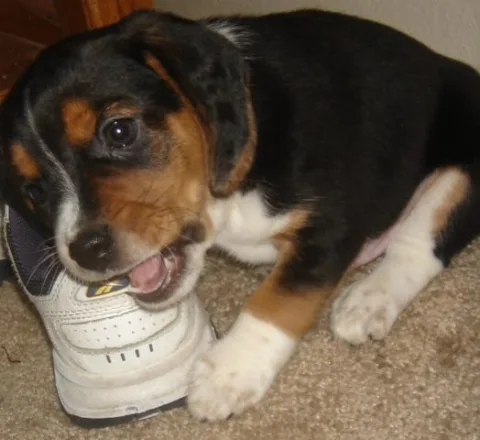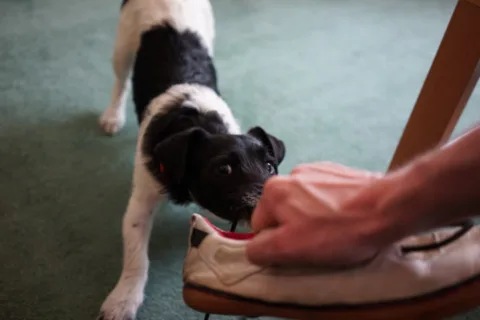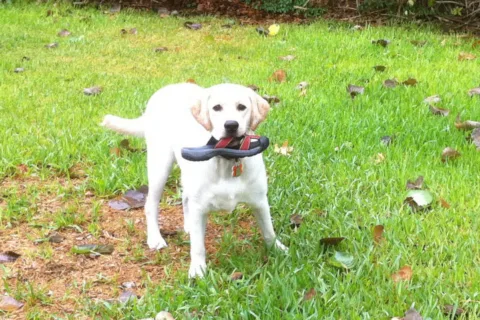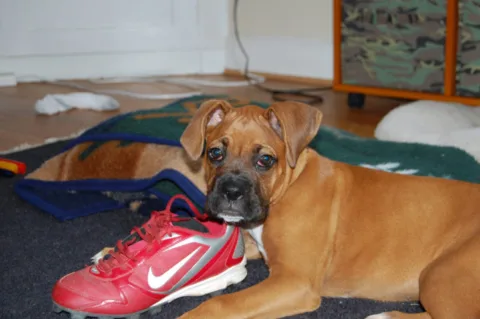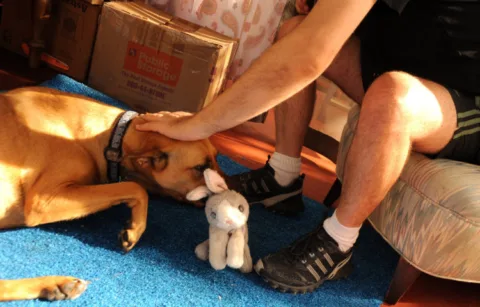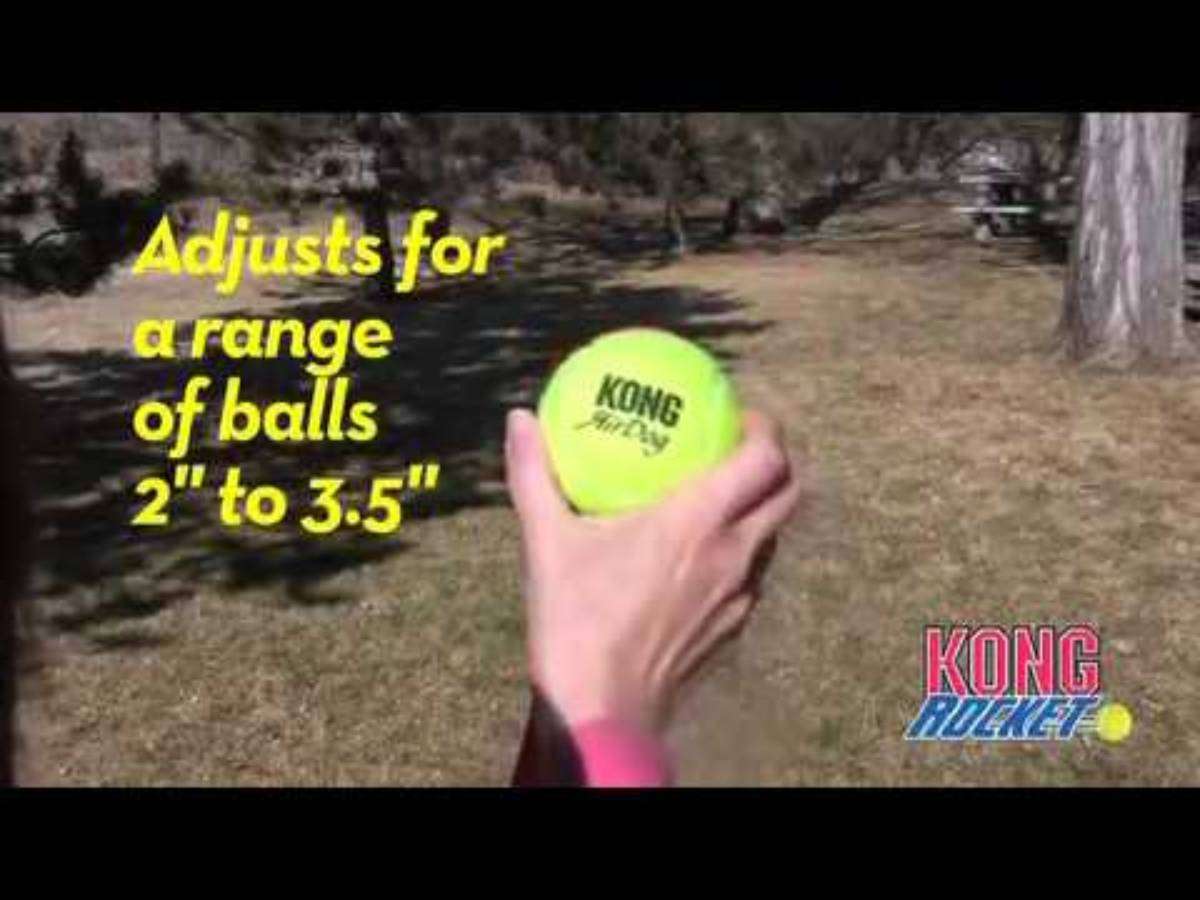Dogs chew things. It’s just what dogs do — especially puppies who haven’t been taught what’s safe for them to chew on and what’s off limits.
In my adult life, I’ve always had a dog. And my dogs have never chewed on my things.
Wait. I should qualify that… after I taught my dogs not to chew on my things, they never chewed on my things.
It really is as simple as that. Your dog just needs to be taught what’s his and what’s yours — what he can chew on and what he’s not allowed to chew on.
If you want to ensure that your dog won’t chew on your stuff, here’s how to do it…
Play The ‘Good Toy – Not A Toy’ Game
I learned the following tips from dog trainer, Terry Ryan.
She wrote the book Coaching People To Train Their Dogs. She’s also the founder of the humane dog training organization called Legacy Canine Behavior & Training.
Basically, you put objects in front of your dog and teach him one by one — which ones are good toys, and which ones are not toys.
You can do this simple exercise several times a day until it’s clear that your dog “gets it”.
He chews on his own stuff… not mine. Generally my chewing strategy is simple: saturation of goodies. When I get a puppy, I flood the house with bones, rawhide, and squeaky toys. A puppy that’s teething and needs to exercise its gums will find something to chew. I’d rather it not be something I value, so everywhere the puppy goes he will find something acceptable. The house is a littered mess for months, but our bedroom slippers get spared. — Jon Katz, Katz on Dogs
Here’s how I’ve adapted Terry Ryan’s ‘Good Toy, Not A Toy’ game:
- Clear a play area. There should be nothing in this area but an empty Kong toy (or some other dog toy) and 2 ‘not a toy’ items (like a shoe and a box of tissues).
- Put your dog in the play area. Then stand back and watch.
-If your dog looks at the tissues or the shoe, say “No, not a toy!” But don’t touch or interact with your dog physically — just say “No, not a toy!”
-If your dog looks at or nudges the dog toy, then rush in right away and say “Good toy!” while you excitedly tell him he’s a good dog and give him a treat. - Then, immediately toss the dog toy around a bit and encourage your dog to play with it. (You may want to smear a little bit of peanut butter on it if your dog won’t play with the toy on his own.)
- After your dog has had 15 to 30 seconds of interaction with you and the toy, put the dog toy back down next to the other 2 ‘not a toy’ items, then pick up your dog and snuggle for 1 minute.
- Play the game again (steps 2 through 4 above). Try to do 3 short games in each play session. Do a few of these play sessions each day until your dog has learned that the item(s) that were place next to his dog toy each time are not play toys.
-Your dog will soon learn that dog toys are not only fun by themselves, but they also get your attention, your interaction, and some tasty dog treats!
-The ‘not a toy’ items will seem boring, by comparison — so your dog will be more likely to ignore them. - End each game after only 15 to 30 seconds — while your dog is still actively involved with and fully enjoying the dog toy. Don’t wait until your dog loses attention in the toy. Then immediately snuggle with your dog for 1 minute.
- For each play session after this, set up the play area so the ‘not a toy” items are clearly visible, but a little bit farther away or off to one side from the dog toy.
- When each play session is over, pick up the ‘not a toy’ items., but leave the dog toy there for your dog to play with if he chooses. Don’t force it though.
- This game will soon have your dog choosing dog toys to play with more times than not — especially if you continue to randomly give him treats and cuddles while he’s playing with them!
- Any time you want to teach your dog about another object that’s not a play toy, set up another play session and include that item as one of the ‘not a toy’ items.
Sometimes it can be difficult to discourage chewing if the pattern is already established. Taste deterrents such as bitter apple can applied to the object, the noxious taste will hopefully deter the determined chewer and he will learn to leave the object alone.
— Dr. Kristy Conn, Cesar’s Way
More Dog Chewing Training Tips
- How To Stop Destructive Dog Chewing
- Dog Chewing: How To Stop Your Dog’s Gnawing Problem
- Best Dog Proof Trash Cans
- What If Your Dog Chews Things She Shouldn’t Outside?
- Dog Won’t Play With Toys? How To Get Your Dog Excited About Dog Toys
- Best Indestructible Dog Toys For Aggressive Chewers
- How To Dog Proof Your House – Inside & Out

